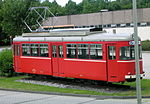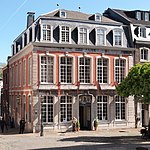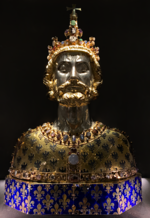Battle of Aachen

The Battle of Aachen was a combat action of World War II, fought by American and German forces in and around Aachen, Germany, between 2–21 October 1944. The city had been incorporated into the Siegfried Line, the main defensive network on Germany's western border; the Allies had hoped to capture it quickly and advance into the industrialized Ruhr Basin. Although most of Aachen's civilian population was evacuated before the battle began, much of the city was destroyed and both sides suffered heavy losses. It was one of the largest urban battles fought by U.S. forces in World War II, and the first city on German soil to be captured by the Allies. The battle ended with a German surrender, but their tenacious defense significantly disrupted Allied plans for the advance into Germany.
Excerpt from the Wikipedia article Battle of Aachen (License: CC BY-SA 3.0, Authors, Images).Battle of Aachen
Karlshof, Aachen
Geographical coordinates (GPS) Address Nearby Places Show on map
Geographical coordinates (GPS)
| Latitude | Longitude |
|---|---|
| N 50.776388888889 ° | E 6.0833333333333 ° |
Address
Markt
Karlshof
52062 Aachen (Aachen-Mitte)
North Rhine-Westphalia, Germany
Open on Google Maps









